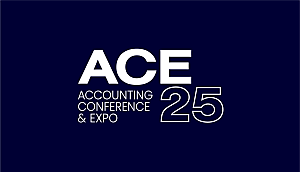Fraser Stead, a lawyer with DBA Lawyers, has reminded trustees on the importance of carefully managing UPEs to minimise the risk of s100A being invoked.
You’re out of free articles for this month
Section 100A of the Income Tax Assessment Act 1936 (Cth) (ITAA 1936) is an anti-avoidance provision that applies to arrangements where one person receives a benefit from a trust but another person is presently entitled to and assessed on that income.
“A typical scenario where s100A may be applied is where a trust distributes income to adult children who are not aware of, and who do not have access to, their beneficiary accounts in the trust and the parents or others use the money for their own use and benefit rather than the money being distributed to or paid to the children,” Stead said.
“If s100A is invoked, the trustee is assessed on the relevant income at the highest marginal rate of 45 per cent plus the Medicare levy under s99A of the ITAA 1936 and the beneficiary is deemed not to have been made presently entitled to that income for tax law purposes.”
Stead said family/discretionary trusts have for many years been used as a means of splitting income between family members to leverage off the tax-free threshold and the progressive personal marginal tax rates of each family member.
“Significant tax can be saved by a family by splitting income via a trust to minimise the overall tax payable by the family,” he said.
“For example, if a trust splits the income between mum and dad in FY2024, and also distributes income between their two adult children, on $560,000 net income in FY2024, around $40,066 tax is saved by splitting $100,000 to each child and the balance of $360,000 equally between mum and dad.”
Stead said according to the ATO, the general practice with some family trusts has not been adequate as some adult children were supposedly entitled to distributions but the trustee – typically the parents as individual trustees or the directors of the corporate trustee – used the income distributed to the children for their own needs.
“The ATO has been increasing its review and compliance activities in recent years and is detecting more cases where the children or other beneficiaries have not received the benefit of the purported distributions made to them,” he said.
“A failure by trustees to notify beneficiaries of their UPE may lead to the ATO applying s100A to tax the trustee at 45 per cent on any income that the beneficiary is not notified of or does not receive any benefit from.”
He added that in paragraph [13] of PCG 2022/2, the ATO outlines the features of different risk zones, including white-low risk for arrangements prior to 1 July 2014, green low risk for arrangements after 30 June 2014, and red high risk.
“In relation to green zone arrangements, the ATO states ‘We will not dedicate compliance resources to consider the application of section 100A to arrangements in the green zone, other than to confirm that the features of the relevant scenario are present in your circumstances’,” Stead said.
“However, paragraph [32] adds that an arrangement where the trustee has not notified a beneficiary of their entitlement to trust income by the trust’s relevant tax return lodgement date will be excluded from the green zone.”
This means, said Stead, that for distribution to beneficiaries made on 30 June 2023, the beneficiaries should have been notified of their entitlements by 15 May 2024 or the date that the trust’s 2023 tax return was due to be lodged.
“There is an increased prospect the ATO will dedicate compliance resources in respect of a particular arrangement where a trustee does not notify a beneficiary of their trust entitlement promptly,” he added.
“Where the ATO determines that s100A should be applied to an arrangement, in addition to any primary tax and interest on late payment, significant penalties may also be applied. There is no time limit on the ATO applying s100A to prior income years. This provision works differently from the usual rule that the ATO cannot generally amend beyond four years from the date of an income tax assessment.”

 Login
Login






